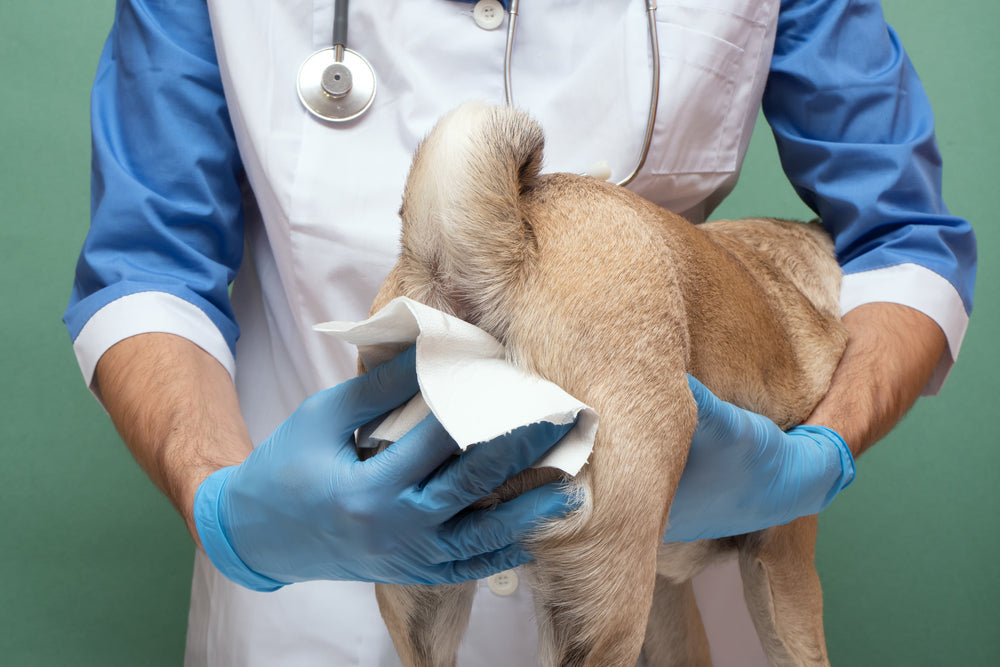How to Remove Dog Poo Tags Safely 2025: Vet-Approved Guide 🐶✨

In this article
How to Remove Dog Poo Tags Safely 2025: Vet-Approved Guide 🐶✨
By Dr. Duncan Houston BVSc
For many dog owners, dealing with fecal matter stuck to a dog’s fur—commonly called “poo tags” or “dingleberries”—is an unpleasant but necessary part of pet care. While it can be a sensitive task, proper removal is crucial for your dog’s hygiene, comfort, and overall health. Here’s a detailed guide to help you handle it safely.
1. Gather Your Supplies
Before you begin, prepare everything you might need:
-
Gloves: For hygiene and protection.
-
Dog-safe scissors or clippers: Rounded-tip scissors or clippers with safety guards are ideal.
-
Dog-friendly wipes or warm, soapy water: To clean the area gently.
-
Towel: To keep your dog steady and clean up afterward.
-
Optional: A second person to help distract or comfort your dog, especially if they’re anxious.
2. Clean the Area
Start by gently cleaning the area:
-
Use a damp cloth or dog-safe wipe to remove any fresh fecal matter.
-
Be gentle and patient to avoid causing discomfort.
-
Wiping first can make trimming easier if the fur is matted with dried matter.
3. Trim the Fur
If the fecal matter has dried or is stuck in the fur:
-
Use dog-safe clippers with a guard whenever possible.
-
Carefully trim the matted hair around the affected area.
-
Avoid using scissors unless absolutely necessary, as there’s a higher risk of cutting the dog’s skin.
-
If you feel unsure or your dog is fidgety, it’s safest to contact a professional groomer or veterinarian.
4. Maintain Regular Grooming
Prevention is better than cure:
-
Long-haired dogs are more prone to “poo tags,” so regular grooming is key.
-
Brush or trim fur around your dog’s bottom regularly to reduce matting and hygiene issues.
-
Consider scheduling periodic professional grooming sessions if needed.
5. Monitor Diet and Health
Frequent occurrences may indicate an underlying problem:
-
Persistent loose stools or diarrhea can lead to recurring poo tags.
-
Evaluate your dog’s diet for potential causes or consult your veterinarian for advice.
-
Health issues such as gastrointestinal upset or infections may need veterinary attention.
6. Keep Your Dog Calm and Comfortable
This process can be stressful for your dog:
-
Approach your dog calmly and speak in a soothing voice.
-
Offer treats during and after grooming to reinforce positive behavior.
-
Never force your dog if they become overly stressed or aggressive—seek professional help instead.
✅ Key Takeaways
-
Poo tags are common, especially in long-haired dogs, but can be safely removed with the right tools and care.
-
Regular grooming and monitoring your dog’s diet and health can prevent future issues.
-
Patience, gentle handling, and positive reinforcement make the process less stressful for both you and your dog.
By following these steps, you can keep your dog clean, comfortable, and happy while avoiding the risks associated with improper grooming.
If you want, I can also create a step-by-step illustrated guide for this process that makes it easy to follow for first-time dog owners.
Do you want me to make that?



